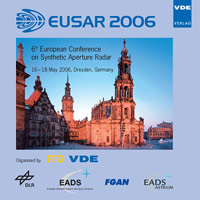A Statistical Approach for SAR Image Sea State Classification: Learning and Evaluating Texture Cues
Konferenz: EUSAR 2006 - 6th European Conference on Synthetic Aperture Radar
16.05.2006 - 18.05.2006 in Dresden, Germany
Tagungsband: EUSAR 2006
Seiten: 4Sprache: EnglischTyp: PDF
Persönliche VDE-Mitglieder erhalten auf diesen Artikel 10% Rabatt
Autoren:
Yao, Zhenyu (National Key Lab of Microwave Imaging Technology, Institute of Electronics, Chinese Academy of Sciences, P. R. China)
Yao, Zhenyu (**Graduate University of Chinese Academy of Sciences, Beijing, 100080, P. R. China)
Zhu, Minhui (Graduate University of Chinese Academy of Sciences, Beijing, 100080, P. R. China)
Inhalt:
High-resolution sea surface SAR images often have salient textural features, which is useful for sea state classification. In this work, we present a statistical approach combining filter bank based texture analysis and pLSA model to classify SAR images of different sea states. Classification is carried under the bag-of-words framework, which characterizes each sea state class as a set of models. Thus, this method can accommodate imaging condition changes. For any set of filters, training SAR images are used to learn the probability distribution of filter responses conditioned on the given sea state class. Multiple texture cues are combined by using their joint distributions. Hence, the cue combination is optimal in the statistical sense. The probability distributions are represented nonparametrically by multiple histograms. To prevent over-learning and reduce the total number of bins required for the histograms, the bin boundaries are determined adaptively in a greedy manner, which maximize the discrimination ability of the classifier in each step. The Chernoff information, a gauge of the separability of two distributions, is applied here to supervise the adaptive binning process and further to evaluate the effectiveness of different texture cues. Finally, we test our classification method over 180 sea surface SAR images (256*256 pixels, airborne L/X bands SAR) under three different sea states. Experimental results show that our method is quite promising.


